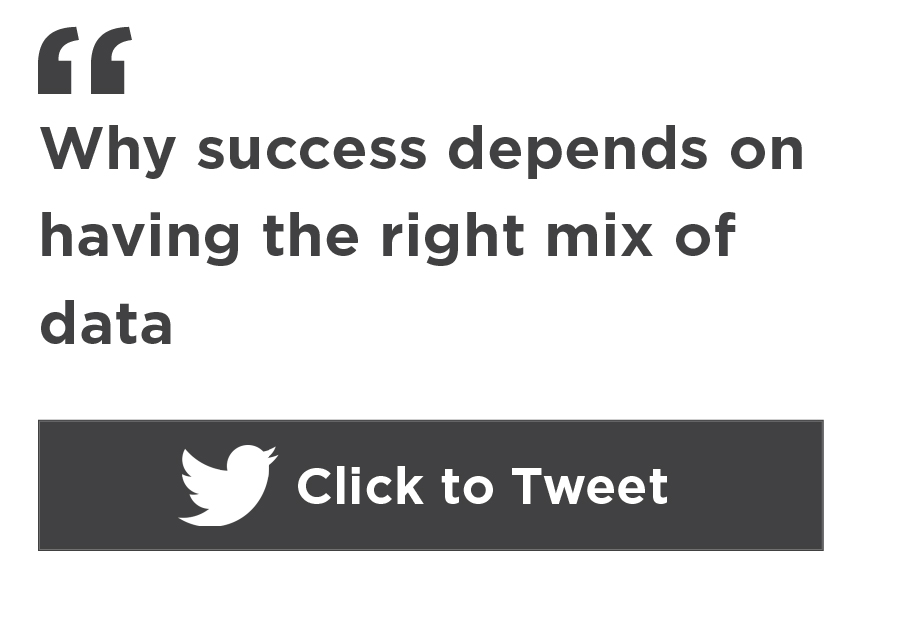In education, as in just about every other field these days, organizations are looking to the power of data to help them solve their most intractable problems. For school leaders diligently working to move the needle on academic performance, high-quality data can be an invaluable resource. Student academic and outcome data, like grades, graduation rates, and test scores, offer the promise of gaining deeper insight into where students are and what they need.
While academic and outcome data are necessary indicators for improvement, they aren’t sufficient on their own to bring about the significant changes in learning conditions that are often needed to produce better student outcomes. Simply put, outcome data doesn’t identify root causes of persistent problems. Low test scores tell educators that students are struggling to retain and demonstrate specific academic content knowledge and skills, but they don’t say much about the dynamics in the school—say, the relationships between teachers and students—that may be hindering student learning.
In this two-part blog post, we’ll talk about how relying solely on outcome data to guide improvement decisions can cause schools to fall short in driving sustainable and meaningful change. Today, we’ll discuss how engaging too narrowly, both in terms of the data we use and the way we engage with it, overlooks the root causes of disappointing outcomes.
When it comes to data, more is more
Conceptually, it makes sense that informed decision-making—like that needed in school improvement planning—requires a robust set of qualitative and quantitative data that reflects both experiences and outcomes. But in education, outcome data continues to be the main driver of improvement planning. Such data points are essential to the improvement process, but in isolation, they don’t lend themselves to the comprehensive analysis needed for sustainable improvement. And when school leaders focus narrowly on student performance, they often end up reaching for a technical solution: something they can buy to manifest change.
[O]utcome data doesn’t identify root causes of persistent problems.
For example, a school leader faced with low test scores might say: How about we buy a new curriculum? It’s an understandable impulse. However, the reality is that the true causes of academic struggles often lie deeper below the surface, beyond the reach of attractive but shallow remedies. In fact, a growing body of research shows that the conditions of the learning experience—deeper factors, such as trust and safety—are linked to multiple student outcomes.
To better understand these conditions, we can look to UChicago Impact’s 5Essentials, a comprehensive, research-based school improvement system centered around five key factors proven to drive better student outcomes: Effective Leaders, Collaborative Teachers, Involved Families, Supportive Environment, and Ambitious Instruction. These 5Essentials are associated with higher outcomes across multiple indicators of student achievement. In fact, research from the University of Chicago Consortium on School Research (UChicago Consortium) shows that schools with strength in three or more of the 5Essentials are 10 times more likely to show substantial gains in student outcomes.
For example, a study in the Detroit Public Schools system found that schools demonstrating strength in the 5Essentials had lower rates of chronic absenteeism. Another study, in San Francisco, showed that schools with improvement plans modeled around the 5Essentials framework saw fewer absences, improved teacher retention, and smaller student achievement gaps between different demographic groups. For more evidence along these lines, see “Supporting school improvement: Early findings from a reexamination of the 5Essentials survey,” a report from the UChicago Consortium.
Get to the root of it
When school leaders expand the data at their fingertips to include insight into the learning conditions of students and the working conditions of teachers, they have a much wider, deeper view of the challenges vexing their school. As a result, they are more likely to implement interventions that target the real causes—and not just the symptoms—of their problems.
[A] growing body of research shows that the conditions of the learning experience—deeper factors, such as trust and safety—are linked to multiple student outcomes.
In other words, surveys like 5Essentials encourage educators to think more broadly about what may be hindering student growth and achievement. For example, if the goal is to improve academic outcomes, there’s only so much that can be gleaned from evaluating and selecting new textbooks or altering the structure of lesson plans. Often, the root cause of the problem can be revealed by asking students about their experience: Do you find your teachers to be trustworthy and responsive to your needs? Do you feel challenged and supported in the classroom?
Similarly, inviting teachers to provide honest feedback can spur discussion and lead to richly informed change efforts. If a survey reveals that teachers feel they don’t have enough influence in the direction of the school, for example, leadership can (and should!) use that insight to reflect on how their own decisions and communication styles may have led some teachers to feel disempowered. With a better understanding of teacher sentiment and their own role in shaping it, leaders can initiate new conversations about how best to empower their teachers to collaboratively define the school’s direction and pursue even greater success.
Real conversations lead to real solutions
It’s important to remember that having high-quality data is great, but it’s not enough. It’s what you do with that data that really matters. A survey that asks big questions will provide big answers, but a survey doesn’t outline solutions. What it does do is provide a much deeper read on the experiences and dynamics that may be affecting student performance. It is school leadership and their key supporters who wield the power of the data. It is what they do with that information that ignites change. Remember our example above about leaders who try to repair low test scores with new textbooks? Now imagine a school leader who faces the same challenge but is equipped with more knowledge. Such a leader might say, “Low test scores? Let’s ask our students about their experiences in class.”
- Do they trust their teachers?
- Do they feel supported?
- Are they being held to high standards and challenged with rigorous instructional practices?
The school leader might also say, “Let’s ask our teachers about their working relationships.”
- Do they trust each other?
- Do they feel supported by leadership?
- Do they share a sense of collective responsibility for the success of all students and support one another to continuously improve instruction?
Now imagine the innovative solutions that might be born out of such conversations. When combining outcome data with insight into the experiences and perspectives of the school community, school leaders suddenly have a more accurate and nuanced representation of their school’s strengths and challenges. That is a powerful place to start when creating an equitable and targeted improvement plan aimed at promoting long-term student success.
Stay focused on your vision of success
Creating this kind of improvement plan and achieving the desired result is rarely easy, but it’s hard to imagine a scenario where it’s not worth the effort. After all, this is the educational experience and attainment of our students we’re talking about. Employing a comprehensive data set that reflects the perspectives of stakeholders requires a commitment to vulnerability. It begins with taking a long, honest look—aided by data and careful coaching and support—at the social components and conditions of the organization, including the analyst’s own leadership practices.
It is school leadership and their key supporters who wield the power of the data. It is what they do with that information that ignites change.
For example, consider the concept of relational trust. Trust enhances the life of a school in innumerable ways—for administrators, teachers, students, and families. When schools learn to treat every interaction as an opportunity to build and strengthen trust-based partnerships, students feel the difference. They feel safer to learn, make mistakes, and engage in meaningful goal setting. And when school professionals learn to trust each other, their working relationships can become true collaborations, paving the way for greater collective efficacy. Talking about trust can be daunting, but when schools commit to it, they gain a much clearer sense of where their attention needs to be and a greater commitment to the complex work of improvement.
A final note: As leaders go beyond piecemeal or technical solutions and begin to engage in identifying root causes, it’s important to be disciplined in the pursuit of improvement. That’s why we like to say, Don’t boil the ocean. Don’t try to do it all at once. Keep it manageable and focus on the factors you can control. A data-driven and disciplined approach to improvement planning holds the possibility of accelerating the pace of improvement and increasing the rate of success.
In our next post, we’ll dive deeper into why diversity of voice in school improvement is so important, and we’ll offer some practical tips for how to bring more voices to the table when planning for improvement.
Carrie Phillips, senior director of School Improvement Services at NWEA, co-authored this post.
This is the first in a two-part series on using data for school improvement. Read the second post.









